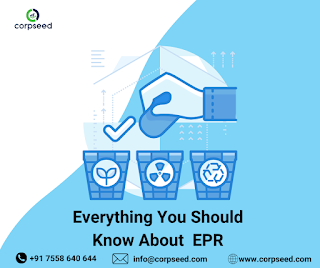Soild and Hazardous Waste Management
Solid Waste
Solid waste is removed in consideration of human progress even before water and air contamination. The municipal solid waste amount is challenging and has changed after some time because of the progression of science and change in the way of life.
Municipal solid waste and hazardous waste can cause a severe environmental problem if it is not managed scientifically. It can be a valuable resource if material and energy are recovered. Solid Waste Conventionally, waste can be defined as any solid or liquid material that doesn't have any further use. As per the Environment Public Health Act, 'waste' incorporates:
a) Scrap material or an emanating emerging from the use of any process
b) Broken, exhausted, polluted, or ruined material have arranged off, and
c) Discarded material will be ventured to be waste except if the opposite is proved. Garbage, mud, slump, and other disposed of durable materials coming about because of industrial, residential, and business exercises and different tasks are characterized as solid waste. It does not include solids or household sewage or various poisons like sediment, disintegrated or suspended solids in modern wastewater effluents, dissolved substances in water system return flow, or other regular water contaminations.
Classification of Solid waste:
Classification based on source
- Residential and Municipal:
Waste begins from local locations like houses, apartments, etc. It comprises of waste incorporates products of the soil seed and peeled material, leaf litter, wood pieces, plastics, ashes, dust, soil, etc. It likewise includes waste started from destruction, development, road cleaning, landscaping, etc.
- Commercial and Institutional:
- Agricultural:
Classification based on the type
Refuse: It incorporates a wide range of junk and garbage.
Garbage: Waste materials from kitchen waste, food, slaughterhouses, storing, freezing businesses can deteriorate effectively are known as garbage.
Waste: Waste incorporates material like paper, elastic, cowhide, wood, garden waste metal, glass, pottery, stones, and soil.
Industrial wastes: waste generated from industries like chemicals, paints, fertilizer, pesticides, sand, and explosives, etc. It can be of hazards in nature.
Solid Waste Management
Management of solid waste in India becomes a demanding responsibility due to urbanization with inappropriate planning and poor economic condition. Municipal solid waste is disposed of on roadside and undefined areas without proper management. Management of solid waste concerns the collection, segregation and secondary storage, transportation, treatment, and final disposal of waste.
Hazardous Waste
Waste is a substance strong, semi-strong, or fluid that has no further use and any waste which shows the attributes of reactivity, poisonousness, combustibility, explosivity, as well as destructiveness and makes hazard or likely reason risk to wellbeing or potentially condition is known as risky waste. Hazardous waste signifies any waste which by reason of attributes, for example, physical, chemical, organic, receptive, harmful, combustible, hazardous or destructive, causes threat or is likely to make risk wellbeing or condition, regardless of whether alone or in contact with different waste or substances as per Hazardous and Other Wastes Rules, 2016, and will incorporate
- Waste indicated under segment (3) of Schedule I
- waste having equivalent to or more than as far as possible determined for the constituents in class An and class B of Schedule II or any of the qualities as indicated in class C of Schedule II
- Wastes determined in Part An of Schedule III in regard to import or fare of such waste or the wastes not determined in Part A yet display dangerous attributes determined in Part C of Schedule III
Types of Hazardous Waste
- Corrosive Waste:
- Reactive Waste
Waste that is unsteady and experiences vicious response promptly without exploding is called reactive waste. For example, it responds savagely with water like essential Sodium and cyanide or sulphide bearing waste, which creates harmful gasses, fumes, or vapor.
- Ignitable
Any fluid has streak points under 60°C, and substances able get touched off or burst into flames by friction, retention of dampness, or unconstrained solution changes at ordinary temperature and pressure and consumes overwhelmingly are called ignitable waste.
- Toxicity Substances
Toxicity substances like substantial metals, for example, Arsenic, Cadmium, Chromium, Mercury, Lead and so forth., Organic Chemicals and pesticides like Benzene, Carbon tetrachloride, Chlorobenzene, Chloroform, Cresol, Endrin, Lindane and so forth in the overabundance of as far as possible recommended are called toxic substances.
- Explosive Solid
Waste, which is out of nowhere, arrives of gas, temperature, and weight with boisterous clamor when oppressed to shock, pressure, or heat, is called explosive.
- Infectious waste
Wastes containing miniaturized scale creatures or their poisons known or suspected to cause illness in animals or people are called infectious waste.
Hazardous Waste Management
- Resource recovery and reuse
- Reduction of waste at source
- Recycling of waste
- Landfilling
- Safe storage
- Transportation through use of Manifest system
- Treatment like incineration, oxidation/reduction, chemical precipitation, biological treatment




Comments
Post a Comment